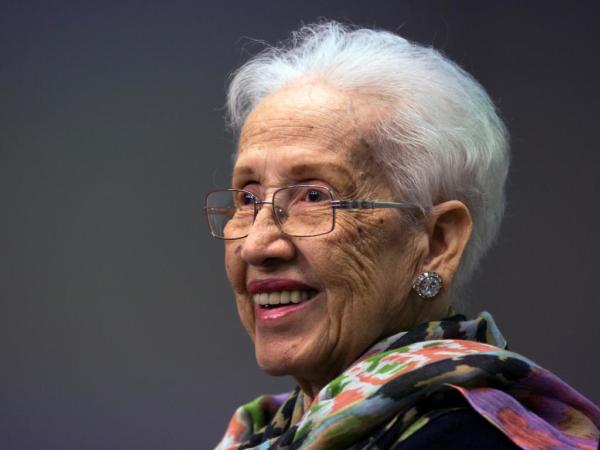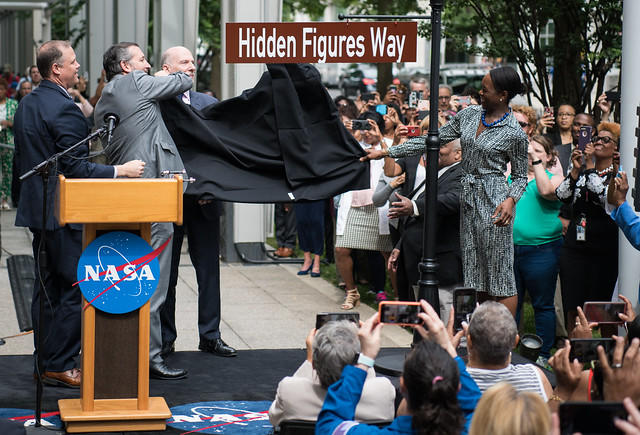Showing 4 results for:
hidden figures
Popular topics
All results

NASA Administrator Jim Bridenstine announced that it will rename its Washington D.C. headquarters after Mary W. Jackson, the first African American female engineer at NASA. Jackson, who was portrayed by Janelle Monáe in the box office hit “Hidden Figures,” started her career in the West Area Computing Unit of NASA’s Langley Research Center in Hampton, Virginia. As a mathematician and aerospace engineer, Jackson authored and/or co-authored several research reports centered around the behavior of the boundary layer of air around airplanes. She also advocated for the hiring and promotion of the next generation of female mathematicians, engineers, and scientists. “Mary W. Jackson was part of a group of very important women who helped NASA succeed in getting American astronauts into space. Mary never accepted the status quo, she helped break barriers and open opportunities for African Americans and women in the field of engineering and technology,” said Bridenstine, according to a NASA...

NASA mathematician, Katherine Johnson, has passed away at 101-years-old. Johnson was a Black mathematician who calculated the flight path for NASA’s first space mission and the first moon landing. The details of her accomplishments were highlighted in the 2017 box office hit, “Hidden Figures.” As an African American aerospace pioneer, Johnson was a trailblazer for racial equity and an advocate for STEM education. Born in 1918 — in White Sulfur Springs, West Virginia — Johnson defied the odds and went on to graduate from West Virginia State College with highest honors in 1937. She then went on to work at what is now known as NASA’s Langley Research Center in Hampton, Virginia. In the midst of racial and gender oppression, Johnson didn’t let discrimination stop her from achieving her dreams of becoming a research mathematician. “I didn’t have time for that… don’t have a feeling of inferiority. Never had. I’m as good as anybody, but no better,” she said in a NASA press release. In...

We are living at the crossroads of the future, where automation , Artificial Intelligence, and code are being used heavily. Although the use of technology is increasing, it is neither new nor the first time workers have had to deal with the possible threat of being replaced by machines. In the film, Hidden Figures , NASA transitions from human computers to machine computers. Mathematicians, Katherine Johnson , Dorothy Vaughan, and Mary Jackson broke down gender and racial walls while learning how to operate the machines that had the potential to replace them. Today, we see more and more companies moving toward automation to cut costs and drive profits. Technical innovations come at a rapid pace, but once these innovations are on the market, these machines and computers will need someone with the technical skills to keep production running. This is our opportunity as Blacks in America. Since we have not transitioned to a world of total automation, we have an opportunity to get the...

It’s been three years since “Hidden Figures” hit theaters celebrating the lives and legacies of three African American women who put a man into space. Now, NASA is honoring those same women with a street in front of its national headquarters in Washington, D.C. Katherine Johnson, Dorothy Vaughan, and Mary Jackson will live on through the newly named, “Hidden Figures Way,” which will replace E Street Southwest. Today, the street in front of @NASA HQ in D.C. is being renamed "Hidden Figures Way" in honor of Katherine Johnson, Dorothy Vaughan & Mary Jackson. Tune in to NASA TV at 1pm EDT for a special @airandspace "STEM in 30" commemorating these amazing women! https://t.co/FIo6IjfZLx pic.twitter.com/4enPbWQvjJ — NASA STEM (@NASASTEM) June 12, 2019 Each of the women served integral roles in helping NASA. Johnson worked for NASA for over 30 years. She’s most well known for her role in the orbital mission that sent John Glenn to space. Johnson, a brilliant mathematician, checked the work...